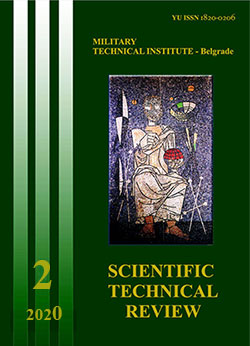|

ISSN: 1820-0206
First published in
1950
About the journal
Editorial board
All
issues
Latest issue
Issue in progress
Publishing
Policy
Guide for authors
Reviwers guidelines
Submit your article
Contact
|
doi:
10.5937/str2002009P
Vol. 70, No.2
(2020), Pages: 9-16
Impressum
Contents
Design of the UAV
Aerodynamics in Multiple stages
Lazar S. Popović
Lazar D. Paunović
Veljko S. Đilas
Aleksandar M. Milutinović
Toni D. Ivanov
Ivan A. Kostić
This paper presents a methodology for aerodynamic optimization of
UAV with VTOL capabilities. Aircrafts such as these usually fly at
low speeds and due to that low Reynolds numbers are to be expected.
The friction drag is highly dependent on the quality of the
production process so unless special measures are undertaken, high
friction drag coefficients could drastically influence overall
performance of the aircraft. Changes of the geometrical parameters
influence not only the induced drag of the wing, but also the
distribution of the base drag due to sensitivity to changes of the
Reynolds numbers. In order to determine the optimal geometrical
parameters of the wing, a code for wing performance analysis was
written. All necessary factors were calculated by utilizing the
Glauert’s solution of the Prandtl’s equation for multi-segmented
wings. By including experimental data of numerous airfoils optimized
for low Reynolds numbers, the base drag distribution, along with the
induced drag of the wings were calculated for a wide range of
angles-of-attack. The obtained results are presented through
diagrams and the methodology for the selection of the highest
efficiency wing is described. The design of the T - shaped
stabilizer was achieved by utilizing analytical methods while the
Vortex Lattice Method, DATCOM and CFD were used for verification
purposes.
Key words: UAV design, VTOL, Aerodynamic design
DOWNLOAD PDF
|